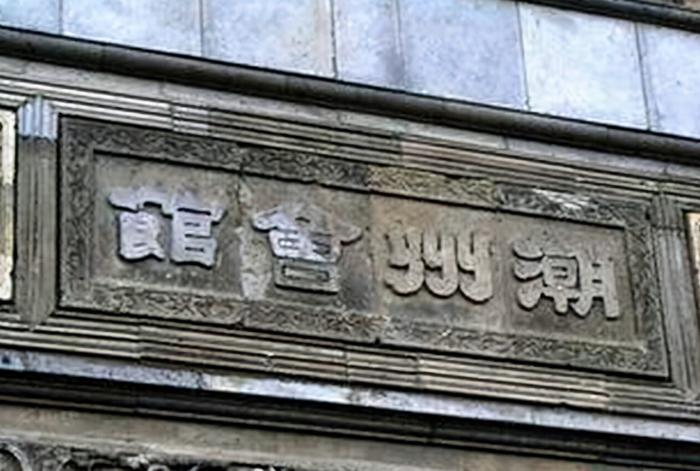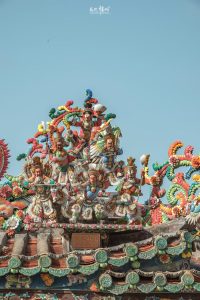The Teochew merchants, known as one of China’s three great merchant groups, have shaped global trade for centuries. Originating from Teochew (Chaozhou) in Guangdong, they embraced maritime trade, earning the nickname “Red-Headed Junk Merchants.” By the early 20th century, the King of Thailand referred to them as the “Jews of the East” for their business acumen. Their influence dates back to the late Tang Dynasty, flourishing through the Song, Yuan, Ming, and Qing Dynasties.

In modern times, Teochew entrepreneurs continue to thrive, producing business tycoons like Li Ka-shing, Lim Por-yen, Dhanin Chearavanont, Tan Sri Teh Hong Piow, and Pony Ma. In the 2023 Hurun Rich List, 54 entrepreneurs from the Chaoshan region were featured, with a combined wealth of 1.54 trillion RMB (approximately USD 218 billion), accounting for roughly 7% of the list’s total wealth. Their legacy spans industries worldwide, blending tea culture and Teochew spirit with global commerce.
1. Economic Architects: From Regional Roots to Transcontinental Empires
The Teochew (Chaozhou) diaspora, originating from China’s Guangdong province, has sculpted global economies through clan-driven entrepreneurship. In Southeast Asia, their dominance is unparalleled:
Thailand’s CP Group (Chearavanont family) controls 38% of agribusiness exports, supplies 20% of China’s poultry, and operates 15,000 7-Eleven stores globally.

Royal Group, led by Chen Fengming, controls 65% of Cambodia’s telecom infrastructure and casinos. Teochew merchants dominate 80% of the nation’s economy. Yet, they make up only 5% of the population.
OCBC Bank was co-founded by Lee Wee Nam in 1912. Today, it is Southeast Asia’s second-largest financial institution. Teochew descendants hold 30 of Singapore’s 94 parliamentary seats.
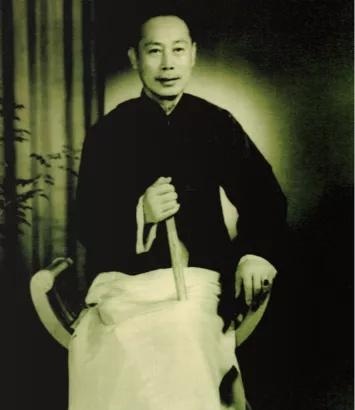
This influence extends beyond Asia. In New York, Teochew families manage 30% of Chinatown’s commercial properties and 15% of the Diamond District’s jewelry trade. Paris’ Tang Frères dominates 35% of France’s Asian food imports, and Nigeria’s Teochew-operated retail chains serve 60% of its consumer market.
2. Cultural DNA: The Three Pillars of Enduring Success
The Teochew blueprint thrives on three cultural tenets:
Entrepreneurial Grit
The proverb “寧可睡地板,也不當老闆” (“Better sleep on floors than work for others”) fuels a 60% entrepreneurship rate among Teochew diaspora, dwarfing the U.S.’s 14.6%. Baoneng Group’s Yao Zhenhua epitomizes this ethos, leveraging a $2.6B stake in 2015 to orchestrate a 153x financial gamble.

Clan Capitalism
Family networks enable rapid resource pooling. For example, Zhu Mengyi’s Hopson Development mobilizes 12 relatives to bid on mega-projects, while 83% of Teochew businesses globally rely on kin partnerships. During the 2008 crisis, verbal agreements among Teochew investors revived Hong Kong’s Hang Lung Properties, later formalized as 98% loan repayments.
Dual-Pact Ethics
Teochew merchants blend Confucian trust (jiāo jǐ rén, “one’s own people”) with Western contracts. Tencent’s Ma Huateng, a Teochew native, secured pivotal investments through regional networks during the company’s 2015 growth challenges, while CP Group harmonizes ISO standards with clan loyalty to manage its global supply chains.
Recommended Reads:The Teochew Entrepreneurs: Five Secrets Behind the “Jews of the East”
3. Next-Gen Evolution: Tech, Sustainability, and Geopolitical Strategy
While (older generation) magnates like Li Ka-shing built infrastructure empires, younger leaders are diversifying into tech and green energy:
Tencent’s Ma Huateng revolutionized digital communication via WeChat (1.3B users), rivaling Meta’s WhatsApp.
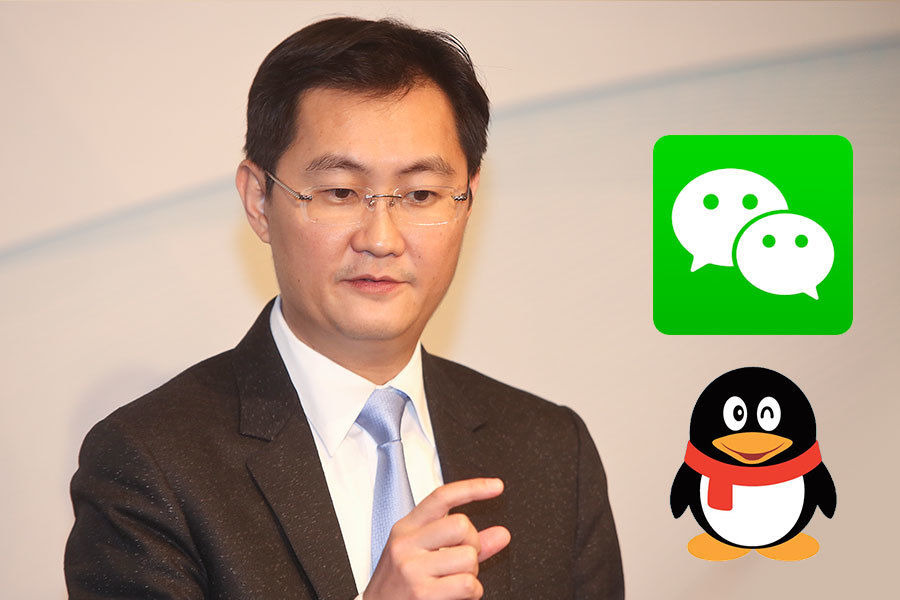
Politically, Teochew networks are leveraging their clout to align with China’s Belt and Road Initiative (BRI) and Greater Bay Area (GBA) development. At the 2019 International Teochew Summit, leaders like Chen Youhan emphasized mobilizing $1.2T in clan capital to fund BRI-linked projects, from Southeast Asian telecom grids to African retail chains.
4. Global Command Centers: Synergy Between Tradition and Modernity
Teochew success hinges on adaptive globalization:
Southeast Asia:
I. Thailand: The “Invisible Economic Kingdom” of the Teochew Business Community
Industry Penetration and Control
Over 70% of Thailand’s wealthiest individuals are of Teochewdescent, forming commercial empires such as the Charoen Pokphand Group (CP Group) led by the Suphachai Chearavanont family, the Siam Commercial Bank founded by the Chen family, and the brewing giant ThaiBev controlled by the Suh family. Chaoshan capital dominates key industries in Thailand, including agriculture (CP Group’s feed business holds a 40% market share), finance (Siam Commercial Bank is Southeast Asia’s largest commercial bank), and retail (7-Eleven Thailand is controlled by Teochew investors).
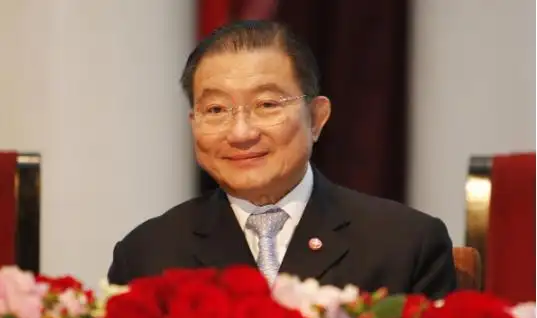
Integration of Politics and Business, and Succession Models
Teochew families consolidate their status through marriages (e.g., the Chearavanont family’s alliances with Thai nobility) and chamber networks (e.g., the Thai Chinese Youth Chamber of Commerce). For instance, Li Jiachun leveraged the Thai Chinese Youth Chamber of Commerce to promote cross-border e-commerce and AI technology integration, connecting the jewelry industry to global markets.
II. Cambodia: The “Rebuilder” Role of Teochew Descendants
The Comeback Legend of Chen Fengming
Chen Fengming, a native of Chaozhou, fled persecution by the Khmer Rouge in his childhood and later founded the Cambodian Royal Group, which dominates sectors such as telecommunications (MobiTel), finance (joint ventures with ANZ Royal Bank), and infrastructure (Phnom Penh real estate development). His family maintains close ties with the government, with his wife and eldest son receiving royal titles, reflecting deep integration of politics and business.

III. Singapore : Transcontinental Chaoshan Capital
Wu Chengliang’s “Paint Empire”
Wu Chengliang, a native of Chaozhou, built his fortune from post-World War II surplus paint supplies and co-founded the Nippon Paint brand with a Japanese partner. With a net worth of RMB 14.2 billion, he became Singapore’s richest man. His business strategy combines traditional Chaoshan clan management (family controlling 60% of shares) with international partnerships.

Europe:
Paris’ 13th Arrondissement hosts 200 Teochew textile wholesalers, and Amsterdam’s diamond trade relies on Chaozhou-born artisans.
Americas:
New York’s Teochew associations, like the Chao Zhou American Chamber of Commerce, bridge U.S.-China trade, with figures like Yao Chuke pioneering cross-Pacific tech exchanges.
5.Teochew’s Tech Visionaries: From Ancestral Wisdom to AI Frontiers
The Teochew legacy of adaptive globalization and cultural preservation now fuels a new frontier: digital innovation. Yang Zhilin, the 31-year-old CEO of Kimi AI, embodies this evolution. A Shantou native and graduate of Tsinghua and Carnegie Mellon, Yang co-created breakthroughs like Transformer-XL before launching Kimi—a ChatGPT rival backed by over $1 billion in funding.

Historian Sterling Seagrave’s observation that Teochew people run “Earth’s most powerful underground network” takes on new meaning as this generation transforms centuries-old diaspora networks into engines of global digital disruption—one algorithm at a time. From Li Ka-shing’s infrastructure empires to Yang’s AI ambitions, the Teochew spirit thrives where tradition and innovation collide.

